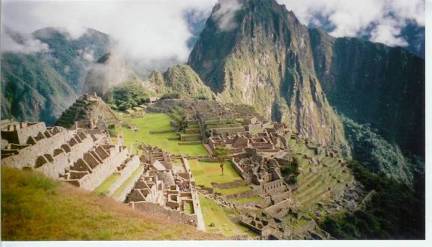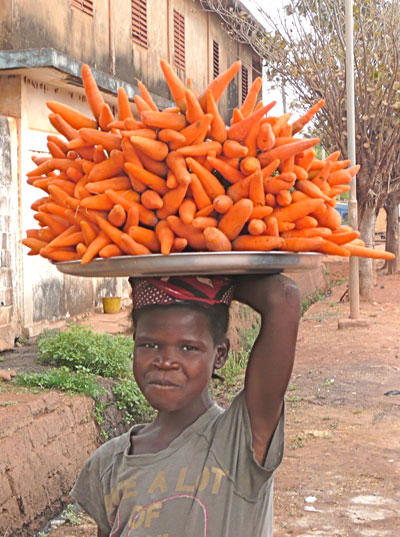The Inca Trail to Machu Picchu, and Lake Titicaca
The Inca’s were master builders – of trails, stone buildings, water systems and sacred sites. From their 15th century capital of Cusco in the Peruvian Andes they built a system of “roads” that would have done the Romans proud. The most extensive of these byways is the Inca Trail, with a famous 27 mile stretch of mountainous track from Quillabamba (a jungle town outside of Cusco) to the Lost City of the Incas – Machu Picchu. Because it got so popular, the government now strictly regulates hiking on the Inca Trail and the 4 day – 3 night trek must be done with a licensed guide/company. Our group had twelve people – and 14 porters to carry the tents, cooking equipment, water, food, tables and chairs, etc. over 7,000 feet of elevation gain. There is a great deal of up and down, going over one pass at 13,750 ft and actually coming down at the end to Machu Picchu, which is at an elevation of about 8,000 ft. There are a number of ruins along the way, including the magnificent Winay Wayna complex near the third night camping site. The last morning the hike begins with flashlights at 4 am in an attempt to get to the Sun Gate for sunrise over Machu Picchu. When we arrived at the Sun Gate, all we could see was clouds. Damn! But after a half hour wait the clouds began to clear and we were treated to one of the most spectacular views on earth (see picture). After a guided tour of the ruins, it is a must to climb Huayna Picchu (with its 48 degree angle, which seems straight up) for a top-down view of the sacred religious site below. It is very easy to see why Machu Picchu is viewed as one of the wonders of the world.
After seeing Machu Picchu the full-day train ride from Cusco across Peru to Puno, on the shore of Lake Titicaca, is a bit boring – but the lake itself is beautiful. The highest navigable lake in the world at over 12,500 ft elevation, Lake Titicaca encompasses part of the border between Peru and Bolivia. The highlight of the trip to this part of Peru is an overnight stay with a family on one of the islands in the lake. We chose Islas Taquile, a twenty mile boat ride out in the middle of the lake. Taquile is a hilly island ½ mile wide and 4 miles long with no cars or transportation – only a number of footpaths for the population of 2,000. Our $22 per person bought a night’s lodging plus three meals with a very nice, but non-English speaking family of six. There was straw on the floor in the bedrooms and the home had 4 light fixtures (but only three light bulbs; I had a candle in a beer bottle in my room). The outhouse was over a crack in the ground, but the family was gracious and the sunset and sunrise over the lake were superb. I’m not sure how I managed to get lost roaming around the island, but I did. A local farmer saw that I didn’t know where I was and pointed me in the right direction. The stay here provided a significant view of the local Peruvian culture and a stark contrast to what we take for granted in the US.




